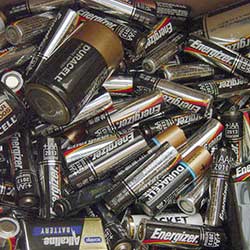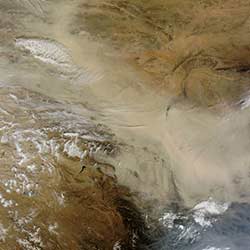
Dear EarthTalk: What resources are out there for helping teachers integrate sustainability topics into their curricula? — Melinda Zullo, Toronto, ON
Teaching our kids about sustainability and green living is one of the most important things we can do to safeguard the future of humanity and the planet we inhabit. The North American Association for Environmental Education (NAAEE) reports that environmental education teaches children how to learn about and investigate their environment and to make intelligent, informed decisions about sustainability. Furthermore, learning about the environment is multi-disciplinary, so it allows teachers a rare opportunity to integrate different parts of the their curriculum while challenging students to think about the big picture. Thankfully, teachers today have a plethora of resources for incorporating sustainability in their lessons and activities.
One great resource is Green Teacher, a quarterly magazine dedicated to helping educators promote environmental awareness among young people aged six through 19. The magazine offers perspectives on the role of education in creating a sustainable future and provides lots of ready-to-use activities. Green Teacher has also released a series of books, including Teaching Green: The Elementary Years, Teaching Green: The Middle School Years and Teaching Green: The High School Years, each which contain over 50 of the best teaching strategies and activities published in the magazine over the past decade. These books contain kid-tested ideas contributed by educators from across North America and cover a wide spectrum of environmental topics, from biodiversity to resource consumption to green technology. Another one of Green Teacher’s books, Teaching in the Outdoors, is a practical guide for getting students outside and includes helpful suggestions for maximizing their learning experience when they get there.
Another great resource is the U.S. Energy Information Administration’s “Energy Kids” website, which provides teachers with energy related stories, hands-on activities and research articles for their classrooms. Free, easy-to-access lesson plans allow students from K-12 to have fun learning about different forms of energy and why some are better for the environment than others. The website also offers biographies of scientists who discovered the energy sources we use today, energy timelines that show how different energy sources and technologies have evolved, and stats on topics like what renewable fuel the U.S. uses most.
A more “hands-on” approach to getting students involved and concerned about their environment is to start a school garden — planted and tended by the kids themselves. According to KidsGardening.org, school gardens build an understanding of and respect for nature and our environment while motivating kids to eat and love fruits and vegetables. Gardening also teaches children to nurture and care for other living things while developing patience. KidsGardening.org provides a full step-by-step guide to help any teacher get a school garden off to a great start.
Meanwhile, more than 5,000 K-12 schools worldwide have teamed up to network about and integrate environmental best practices into their curricula, administration and facilities through the non-profit Green Schools Alliance (GSA). Membership in GSA is free, but requires a commitment to take action on any or all of three tracks: reducing the member schools’ climate and ecological impact; educating and engaging the local community; and connecting to nature and place. No doubt, GSA is right when it asserts that schools are “hubs of their communities that build resilience, transform markets and policy, shift behavior, and prepare the next generation of innovators to become environmental stewards.”
Contacts: Green Teacher, www.greenteacher.com; EIA Energy Kids, www.eia.gov/kids; NAAEE, www.naaee.net; KidsGardening.org, www.kidsgardening.org; Green Schools Alliance, www.greenschoolsalliance.org. Photo (above): Planting and tending a schoolyard garden is a hands-on way for students to learn about sustainability, the environment and healthy food choices. Credit: Gottfried not Bouillon, FlickrCC

Truth be told, those old, used-up, disposable alkaline batteries (AA, AAA, C, D, 9-volt, etc.) aren’t the environmental menace they used to be before the federal government mandated taking out the mercury, a potent neurotoxin linked to a wide range of environmental and health problems, as part of the Mercury-Containing and Rechargeable Battery Management Act of 1996. These days, in every U.S. state except California (which requires recycling of all spent batteries), it is safe and legal to throw them in the trash.
Environmental Health & Safety Online, the leading web-based clearinghouse for information on environmental health and safety, reports that today’s alkaline disposables are composed “primarily of common metals — steel, zinc, and manganese — that do not pose a health or environmental risk during normal use or disposal.”
In California, tighter waste reduction laws mean that residents are required to recycle their spent alkalines by placing them in clear ziplock bags on top of their curbside trash cans (so garbage haulers can keep them separate) or by dropping them in battery recycling bins (such as in larger apartment buildings and at libraries). Many electronics, big box and drugstore chains that sell batteries (BestBuy, Walgreens and others) will also take them back for free and send them off for recycling. Check out CalRecycle’s website for more detailed information on battery recycling in the Golden State.
Unfortunately, some other kinds of disposable batteries, such as the increasingly ubiquitous alkaline manganese “button cells” (commonly used in digital thermometers, calculators and many toys), still contain mercury, and the federal government provides little guidance regarding their proper disposal. The Mercury-Containing and Rechargeable Battery Management Act doesn’t mandate phasing mercury out of alkaline manganese button cells because, at the time of the law’s passage in 1996, including mercury was the only way to control the potentially dangerous formation of gas inside the specialized miniature batteries. Lithium button cells are a safer, mercury-free alternative now widely available, but consumers often opt for the still cheaper alkaline manganese variety.
“The use and disposal of mercury-added button cells are unregulated at the federal level,” reports the U.S. Environmental Protection Agency. “They do not have to be labeled; it is legal to dispose of them in the household trash; and they rarely are collected for recycling in most U.S. jurisdictions.” California is currently the only state that mandates recycling even for alkaline manganese button cells, but several other states are considering regulating their disposal and whether to subsidize special recycling programs for them. But until then, most of the mercury from these little wonders will end up in the municipal solid waste stream and contribute to our ongoing pollution burden.
Fortunately, the recycling of most types of rechargeable batteries (which can contain potentially harmful heavy metals and other contaminants) remains easy, thanks to an industry-backed program called Call2Recycle that points people toward recyclers and retailers across the U.S. and Canada happy to take them off your hands at no cost.
Contacts: Environmental Health & Safety Online, www.ehso.com; Call2Recycle, www.call2recycle.org; CalRecycle, www.calrecycle.ca.gov/reducewaste/Batteries/.

Unlike the Great Wall of China, a 5,000-mile fortification dating back to the 7th century BC that separates northern China from the Mongolian steppe, the Great Green Wall of China — otherwise known as the Three-North Shelter Forest Program — is the biggest tree planting project on the planet. Its goal is to create a 2,800-mile long green belt to hold back the quickly expanding Gobi Desert and sequester millions of tons of carbon dioxide in the process. If all goes according to plan, the completion of the Green Wall by 2050 will increase forest cover across China from 5 to 15 percent overall.
The Chinese government first conceived of the Green Wall project in the late 1970s to combat desertification along the country’s vast northwest rim. Soon thereafter, China’s top legislative body passed a resolution requiring every citizen over the age of 11 to plant at least three Poplar, Eucalyptus, Larch and other saplings every year to reinforce official reforestation efforts.
But despite progress — according to the United Nations’ most recent Global Forest Resources Assessment, China increased its overall forest cover by 11,500 square miles (an area the size of Massachusetts) between 2000 and 2010, with ordinary citizens alone planting upwards of 60 billion trees — the situation is only getting worse. Analysts think China loses just as many square miles of grasslands and farms to desertification every year, so reforestation has proven to be an uphill battle. The encroaching Gobi has swallowed up entire villages and small cities and continues to cause air pollution problems in Beijing and elsewhere while racking up some $50 billion a year in economic losses. And tens of millions of environmental refugees are looking for new homes in other parts of China and beyond in what makes America’s Dust Bowl of the 1930s look trivial in comparison.
“The desertification of north and western China is arguably the most under-reported environmental crisis facing China today and is little understood outside the circles of NGOs [non-governmental organizations] and groups of scientists who are desperately fighting against it,” reports Sean Gallagher, an activist with Greenpeace. While climate change is certainly a big factor, Gallagher adds that overgrazing, water mismanagement, outdated agricultural methods and the swelling of human populations are also contributing to this wholesale conversion of the region’s once arable and habitable landscapes into sand dunes. “In China, approximately 20 percent of land is now classified as desert or arid, and desertification is adversely affecting the lives of over 400 million people in China alone.”
More recently, the Green Wall project has taken on additional importance for its potential as a “carbon sink” to store greenhouse gases that would otherwise find their way into the atmosphere and exacerbate global warming. But critics point out that it’s hard to quantify just how much carbon the Green Wall can store, and that plantations of fast-growing, non-native trees going in as part of the project don’t store as much carbon as more diverse, naturally occurring native forests.
Regardless, the Chinese government is already talking up the Great Green Wall as a key weapon in its arsenal to fight global warming and as proof to the rest of the world that China is taking strong steps to mitigate carbon emissions. With completion of the Great Green Wall still 35 years out, only time will tell how effective it will be as a solution for some of China’s (and the world’s) most vexing environmental problems.
Contact: UN Global Forest Resources Assessment, www.fao.org/docrep/013/i1757e/i1757e.pdf.









